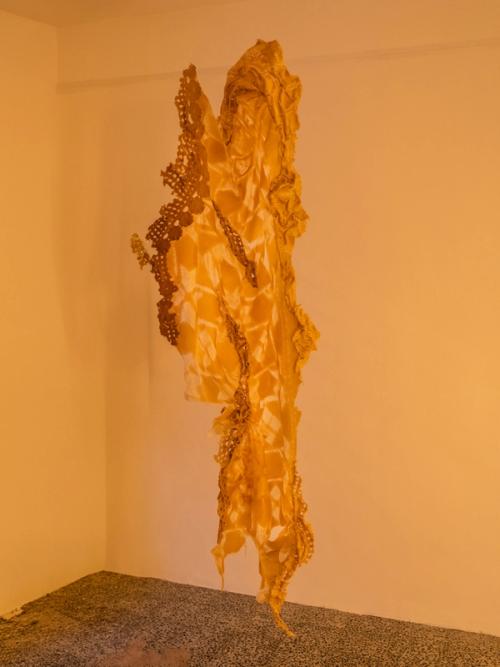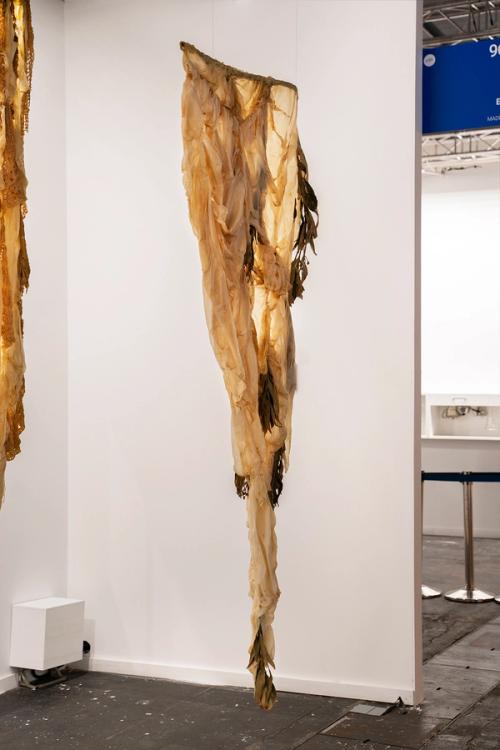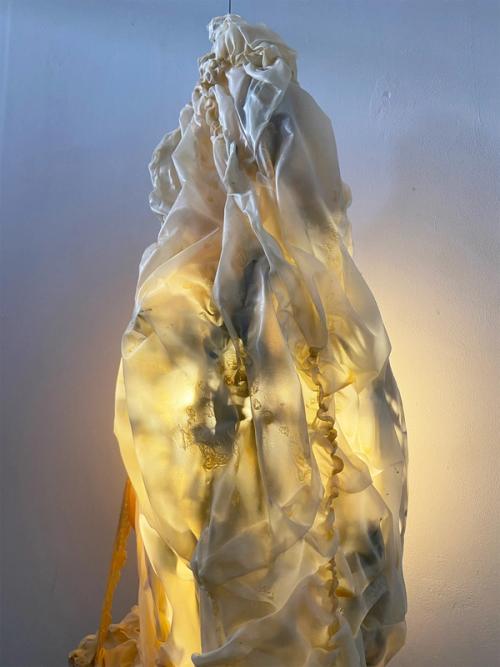Maya Pita-Romero
Madrid, 1999
CV
DownloadMaya Pita-Romero is a visual artist who investigates the transformations of ecosystems and their link with the processes of the body. Through installation and sculpture, she explores new viscous imaginaries that rethink contemporary relationships. She questions aseptic forms of care and human behavior in the face of strangeness. Her works are constructed primarily of organic elements and biomaterials that change, ferment and decompose over time.
Maya is part of a generation that has grown up and developed interests within the technological revolution, which caused a rift not only in the visual arts but essentially in everything around us. Slowly, a kind of tradition has formed, composed of practices that not only deepen into the present but also explore future possibilities: what will our lives be like in the short and medium term?
In a way, the evolution of Maya’s practice serves as a guide to traverse various evolutions: human, artistic, natural. The conceptual nature of a possible future continues to intertwine with the fundamental aspects of form in art in a constant and endless fabric, like the blankets woven by her great-grandmother that have served to cover different generations and now, in the hands of the artist, transform into a different type of attire, one that pushes us to think about the past and the future, from our current position and with everything we have experienced.
Maya is part of a generation that has grown up and developed interests within the technological revolution, which caused a rift not only in the visual arts but essentially in everything around us. Slowly, a kind of tradition has formed, composed of practices that not only deepen into the present but also explore future possibilities: what will our lives be like in the short and medium term?
In a way, the evolution of Maya’s practice serves as a guide to traverse various evolutions: human, artistic, natural. The conceptual nature of a possible future continues to intertwine with the fundamental aspects of form in art in a constant and endless fabric, like the blankets woven by her great-grandmother that have served to cover different generations and now, in the hands of the artist, transform into a different type of attire, one that pushes us to think about the past and the future, from our current position and with everything we have experienced.





